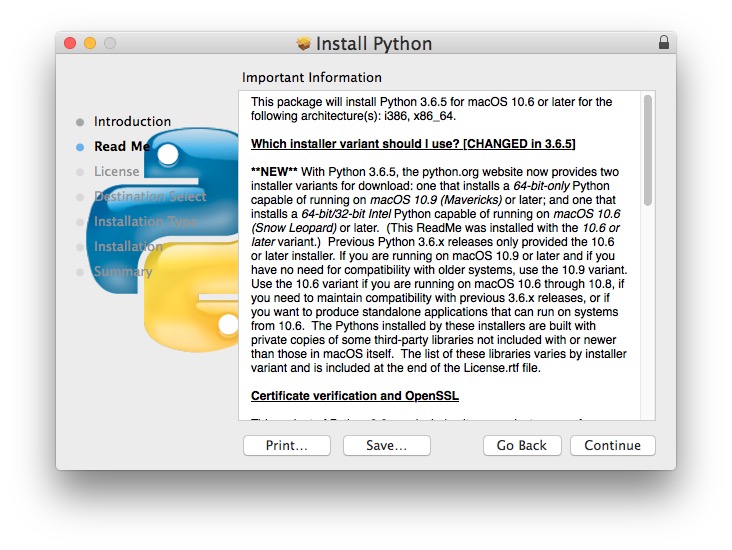How To Install Libsvm For Python On Mac

Contribute to Salinger/libsvm-python development by creating an. For Python with Homebrew in Mac OS X. When you install libsvm.
Your Mac system likely already has Python installed on it. However, this installation is normally a few years old — or whatever the age of your system happens to be. You won’t be testing the limits of Python programming technology — just getting a great start using Python.
The Leopard version of OS X (10.5) uses a really old version of Python 2.5.1. This particular version lacks direct access to the IDLE application. This article tells you more about how to overcome this particular issue. Currently, the newest version of OS X (Mavericks, or 10.9) comes with Python 2.7.
Depending on how you use Python, you might want to update your installation at some point. Part of this process involves installing the GNU Compiler Collection (GCC) tools so that Python has access to the low-level resources it needs. The following steps get you started with installing a new version of Python on your Mac OS X system.
Navigate to the Python download site with your browser.
You see information regarding the latest version of Python.
Click the appropriate link for your version of OS X:
Python 3.3.4 Mac OS X 64-bit/32-bit x86-64/i386 Installer for 32-bit or 64-bit versions on the Intel processor
Python 3.3.4 Mac OS X 32-bit i386/PPC Installer for 32-bit versions on the Power PC processor
The Python disk image begins downloading. Be patient: The disk image requires several minutes to download. Most browsers provide a method for monitoring the download process so that you can easily see how long the download will take. When the download is complete, your Mac automatically opens the disk image for you.
The disk image actually looks like a folder. Inside this folder, you see a number of files, including python.mpkg. The python.mpkg file is the one that contains the Python application. The text files contain information about the build, licensing, and any late-breaking notes.
Double-click python.mpkg.
You see a Welcome dialog box that tells you about this particular Python build.
Click Continue three times.
The installation program displays late-breaking notes about Python, licensing information (click Agree when asked about the licensing information), and, finally, a destination dialog box.
Select the Volume (hard drive or other media) that you want to use for installing Python and click Continue.
The Installation Type dialog box appears. This dialog box performs two tasks:
Click Customize to change the feature set that is installed on your system.
Click Change Install Location to modify the place where the installer places Python.
Click Install.
The installer may request your administrator password. Type the administrator name and password, if required, into the dialog box and click OK. You see an Installing Python dialog box. The contents of this dialog box will change as the installation process proceeds so that you know what part of Python the installer is working with.
After the installation is completed, you see an Install Succeeded dialog box.
Click Close.
Python is ready to use. (You can close the disk image at this point and remove it from your system.)
Join GitHub today
GitHub is home to over 40 million developers working together to host and review code, manage projects, and build software together.
Sign upHave a question about this project? Sign up for a free GitHub account to open an issue and contact its maintainers and the community.
By clicking “Sign up for GitHub”, you agree to our terms of service and privacy statement. We’ll occasionally send you account related emails.
Already on GitHub? Sign in to your account
Comments
commented Aug 17, 2016

Dfi ad73 pro drivers. pip install libsvm Also , only linux-64 and osx-64 installation packages in the anaconda cloud. Thanks in advance |
commented Aug 17, 2016 •
Ok , I managed to find and install But libsvm cannot be imported Is it related to vc9_1 build instead py27_0/py27_1/py27_2 ? |
commented Aug 18, 2016
The simple answer is, libsvm is not a python package, and you cannot import it directly from python. But you can use ctypes to import it into python Here is the info about this package: As can be seen, there is a dll library created in Library/lib, then you can use ctypes to call function in that dll library. For more details, please see here Or you can build it from github source, and please refer to here Moreover, conda libsvm package let you run something like svm-train, svm-scale from command line according to those .exe files |